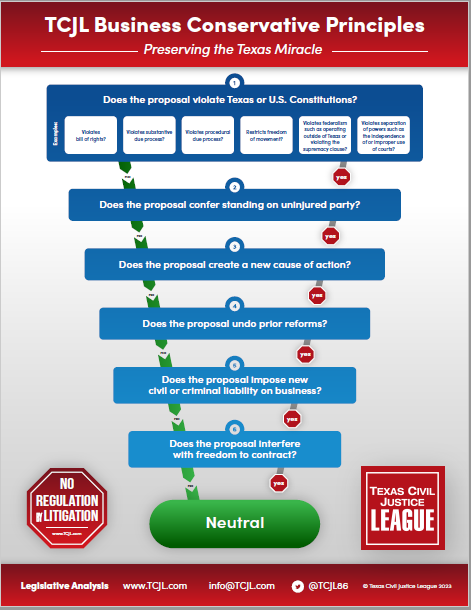 As everyone knows, Winter Storm Uri came within a hair’s breadth of crashing the electric grid, prompting the PUC, among other things, to order ERCOT to establish a $9,000/MWh as the both the floor and ceiling “market price” for energy for a four-day period in February 2021. Numerous power generators immediately challenged the PUC’s orders by direct appeal to the Austin Court of Appeals. They also filed administrative challenges to settlement invoices issued by ERCOT for transactions during the storm, which reflected that price. The generators assert that the PUC exceeded its statutory authority when it issued the order and that the invalidity of the order likewise invalidates the settlement invoices.
As everyone knows, Winter Storm Uri came within a hair’s breadth of crashing the electric grid, prompting the PUC, among other things, to order ERCOT to establish a $9,000/MWh as the both the floor and ceiling “market price” for energy for a four-day period in February 2021. Numerous power generators immediately challenged the PUC’s orders by direct appeal to the Austin Court of Appeals. They also filed administrative challenges to settlement invoices issued by ERCOT for transactions during the storm, which reflected that price. The generators assert that the PUC exceeded its statutory authority when it issued the order and that the invalidity of the order likewise invalidates the settlement invoices.
Those are the highly generalized facts (the opinion contains a lengthy and detailed discussion if you are interested) of Luminant Energy Company LLC v. Public Utility Commission of Texas (No. 03-21-00098-CV; filed March 17, 2023). Specifically, Luminant contended that the PUC’s orders “(1) constitute[d] de facto competition rules under Chapter 39 of the Texas Utilities Code, (2) were adopted in violation of the rulemaking provisions of the Administrative Procedure Act (APA), and (3) exceed[ed] the Commission’s statutory authority.” The PUC countered that “(1) the subject Orders [were] not rules; (2) if they [were] rules, they were adopted in substantial compliance with the emergency rulemaking provisions of the APA; (3) the PUC was expressly authorized by statute to correct the allegedly erroneous pricing by the [scarcity pricing mechanism]; and (4) for a variety of reasons, th[e] Court lacks subject-matter jurisdiction.”
Taking the jurisdictional issues first, the court held that:
- Luminant’s claims were not moot because, although the contested orders had expired, the generators were “separately disputing thes settlement statements through ERCOT’s administrative ADR process, alleging unlawful overpricing of thousands of dollars per megawatt hour.” Thus, the court reasoned “our decision in this appeal may have very real material consequences for all involved,” to the particular detriment of the generators. In a careful analysis of cases cited by the PUC supporting mootness, the court noted that they primarily involved straight-up challenges of previously adopted rules that were no longer in effect at the time of the lawsuit. In those cases, the claimants’ requested relief was to invalidate a rule that no longer existed. Such is not the case here, the Court concluded, and the generators’ claims are alive and well.
- The court has jurisdiction “to remedy actions undertaken pursuant to a voidable order before it is adjudicated as void.” The PUC had argued that an improperly promulgated rule is merely voidable, not void ab initio, meaning that the order was valid when ERCOT carried out the PUC’s instructions. Consequently, the generators were not entitled to “retroactive” relief. Again, in a careful analysis of cases cited by the PUC, the court found nothing directly on point, but likening the voidability/void ab initio distinction as found in contract law, the court stated that “it is unclear why a party aggrieved by a voidable act of a state agency should not be able to recover a remedial sum necessary to make it whole once the act is finally adjudicated void, or, as here, to avoid an obligation predicated on a void act.”
- The generators’ claims are redressable by the court. Here the PUC recycled its argument about voidability, asserting that since the generators could only get prospective relief, nothing the court could order would remediate their injuries. The PUC argued further that ERCOT, not the PUC, was the appropriate entity as to market-wide price correction and could not itself redress the generators’ claims. The court didn’t buy this argument, noting that the PUC has complete statutory authority over ERCOT, which acts as the PUC’s agent. It further rejected PUC’s argument that Chapter 39, Utilities Code, limits a court’s ability to provide a remedy merely to remand of a defective rule back to the agency, which could then merely ratify or do something else. Not so, said the court, since the statute gives courts authority to render judgment affirming, reversing, or remanding a defective rule “consistent with the court’s opinion and judgment,” similar to its authority in any other civil case.
- The contested orders are rules. The PUC argued that the pricing orders were directed to ERCOT, not market participants, so they did not bind private parties as the APA requires. Rejecting this argument, the court reasoned that the orders were well-known to substantially affect market participants and that, again, ERCOT is a statutory creature of the PUC.
- The generators are challenging the validity of the orders, not their application. The PUC argued that since ERCOT could simply have disobeyed the orders and done something else meant that the generators’ challenge went to ERCOT’s “decision” to implement the maximum $9,000 scarcity price. The court quickly dismissed this argument, holding that the generators’ complaint is based squarely on the orders and whether they were valid.
The remainder of the opinion discusses the merits of the generators’ argument that the PUC exceeded its statutory authority when it ordered ERCOT to go to the maximum scarcity price for the duration of the storm. The court reasoned that these orders breached the PUC’s authority under § 39.001(d), Utilities Code, which directs the commission to “authorize or order competitive rather than regulatory methods to achieve the goals of this chapter to the greatest extent feasible and shall adopt rules and issue orders that are both practical and limited so as to impose the lease impact on competition.” While acknowledging the severity of the storm and the immense pressure under which ERCOT and the PUC operated at that time, the court construed the statute as requiring, to the greatest possible extent, the preservation of market competition and the PUC’s actions as a statutory violation. During the storm, the market clearing price had risen to $1,200/MWh, well below the statutory cap of $9,000. The commission determined that this price was too low to incentivize “peaker” generators to juice the system and decided to go all the way to the cap and hold it there. The court thus found that the PUC’s decision to eliminate competitive pricing altogether went beyond the agency’s mandate.
The court reversed the PUC’s orders and remanded the case for further proceedings. This is a very consequential decision, which the PUC will no doubt take up to SCOTX. In the short term, it allows the generators to go forward with their administrative case at ERCOT, which may or may not result in any monetary recovery. The long-term effect remains to be seen, but the court has made it crystal clear that state agencies cannot simply act by fiat, as the agency arguably did here. For those seeking to put a label on the Austin Court of Appeals as somehow “activist” or “not conservative enough” (though in today’s environment we don’t even know what all that means), we urge a close reading of this opinion. It addresses a question of first impression by heavily relying on well-established principles of administrative law and statutory construction. It is thus profoundly “conservative” in its analysis, and the decision effectively admonishes a powerful state agency for overreaching their authority and substantially impairing private rights.











